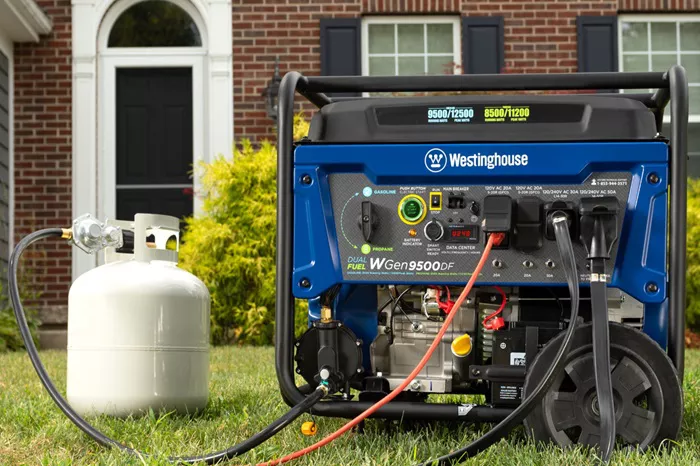Choosing the right generator for your home is crucial to ensure you have reliable backup power during outages. The size of the generator you need depends on several factors, including the appliances you want to run, your home’s power requirements, and fuel efficiency. In this guide, we’ll break down everything you need to know to select the best generator size for your household.
Understanding Generator Sizing Basics
Generators are measured in watts (W) or kilowatts (kW), which indicate their power output. The right size depends on:
Starting Watts (Surge Power): The extra power needed when appliances first turn on.
Running Watts (Continuous Power): The steady power required to keep appliances running.
To find the right generator, you must calculate your home’s total wattage needs.
How to Calculate Your Home’s Power Needs
List Essential Appliances
Identify which devices you want to power during an outage. Common essentials include:
- Refrigerator (700-1,200W running, 2,200W starting)
- Sump (800-1,300W running, 2,000-3,000W starting)
- Lights (60-100W per bulb, LED bulbs use less)
- Furnace (500-1,500W)
- Microwave (600-1,200W)
- TV (100-400W)
- Laptop (50-100W)
Add Up Running and Starting Watts
Add the running watts of all appliances you’ll use simultaneously. Then, identify the highest starting wattage (usually from motors like refrigerators or AC units).
Formula:
Total Running Watts + Highest Starting Watts = Minimum Generator Size Needed
Example Calculation
If you want to run:
- Refrigerator (1,200W running + 2,200W starting)
- Lights (200W)
- Furnace (800W)
- TV (200W)
Total Running Watts: 1,200 + 200 + 800 + 200 = 2,400W
Highest Starting Watts: 2,200W (from the fridge)
Minimum Generator Size: 2,400 + 2,200 = 4,600W (4.6kW)
A 5,000W generator would be a good fit in this case.
Different Generator Sizes for Home Use
Small Portable Generators (1,000W – 3,500W)
Best for: Powering a few essentials like lights, a fridge, and a TV.
Pros: Affordable, portable, fuel-efficient.
Cons: Not enough for large appliances like air conditioners.
Mid-Sized Generators (3,500W – 8,500W)
Best for: Running multiple appliances, including a well pump or window AC.
Pros: Handles most household needs, still portable.
Cons: Heavier, consumes more fuel.
Large Standby Generators (10,000W – 20,000W+)
Best for: Whole-house backup with automatic switching.
Pros: Powers everything, automatic operation.
Cons: Expensive, requires professional installation.
Fuel Types and Efficiency
Generators run on different fuels, each with pros and cons:
Gasoline: Easy to find but less efficient, short shelf life.
Propane: Cleaner, stores longer, but less energy-dense.
Diesel: Efficient for heavy-duty use, but noisy and costly.
Natural Gas: Best for standby generators, requires a gas line.
Inverter vs. Conventional Generators
Conventional Generators: Cheaper, but produce fluctuating power (bad for sensitive electronics).
Inverter Generators: More expensive, but provide stable power, quieter, and fuel-efficient.
Final Tips for Choosing the Right Generator
Prioritize essential appliances : don’t oversize if you only need basics.
Consider fuel availability : propane and natural gas are better for long outages.
Check noise levels : inverter generators are quieter.
Think about portability : if you need mobility, a mid-sized portable generator may be best.
For full-home backup, a standby generator is ideal but requires professional setup.
Conclusion
A good generator size for home use depends on your power needs. Small generators (1,000–3,500W) work for essentials, while larger homes may need 7,000W or more. Calculate your wattage requirements, consider fuel type, and decide between portable and standby models. By choosing the right generator, you’ll ensure your home stays powered during emergencies.
Would you like recommendations based on your specific home setup? Let us know in the comments!

